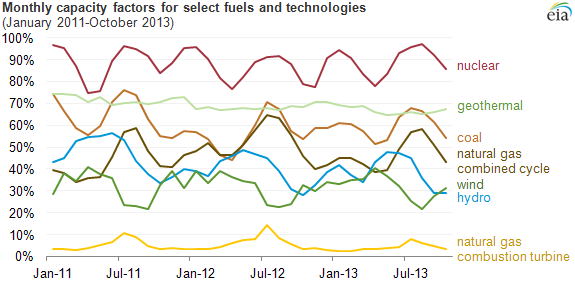OVERKILL
$100 Site Donor 2021
Originally Posted By: SHOZ
The facts are there.
No they aren't, that's the problem. We are provided with installed capacity and new installed capacity, which is being pimped intentionally without including actual generating output because that wouldn't look as good.
Originally Posted By: SHOZ
You can slice and dice them all you want.
I can only "slice and dice" what I'm provided. What do you think the site you keep citing is doing, providing us with an unbiased, entirely neutral viewpoint?
Originally Posted By: SHOZ
New hydro is being developed, lets hope no more droughts. And yes natural gas is replacing coal at a fast rate. Our many landfills produce quite a bit.
Hydro is a fantastic resource and probably my favourite generator given that it can provide baseload unlike wind and solar. Natural gas is cheap and flexible, so it isn't a surprise to see its installed capacity approach 50%. If it is being leveraged primarily for baseload and not peaker usage it likely makes up close to 70% of your actual output too, food for thought. Methane from a landfill isn't the same thing as Natural Gas procured from wells though, I would be surprised to see it make up even half of the fuel source for these facilities, which are likely fed the same NG that is heating homes like what is used up here.
The facts are there.
No they aren't, that's the problem. We are provided with installed capacity and new installed capacity, which is being pimped intentionally without including actual generating output because that wouldn't look as good.
Originally Posted By: SHOZ
You can slice and dice them all you want.
I can only "slice and dice" what I'm provided. What do you think the site you keep citing is doing, providing us with an unbiased, entirely neutral viewpoint?
Originally Posted By: SHOZ
New hydro is being developed, lets hope no more droughts. And yes natural gas is replacing coal at a fast rate. Our many landfills produce quite a bit.
Hydro is a fantastic resource and probably my favourite generator given that it can provide baseload unlike wind and solar. Natural gas is cheap and flexible, so it isn't a surprise to see its installed capacity approach 50%. If it is being leveraged primarily for baseload and not peaker usage it likely makes up close to 70% of your actual output too, food for thought. Methane from a landfill isn't the same thing as Natural Gas procured from wells though, I would be surprised to see it make up even half of the fuel source for these facilities, which are likely fed the same NG that is heating homes like what is used up here.



